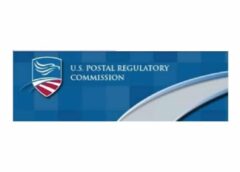On June 12, the Postal Regulatory Commission reopened a docket initiated in 2021 but later suspended while a related matter was being reviewed in federal court. Docket RM2021-2, opened January 15, 2021, was to consider a “Performance
Incentive Mechanism” to motivate improved Postal Service performance. As stated in the original Advance Notice Of Proposed Rulemaking, the PRC sought
“… input from the public about what additional regulations promulgated by the Commission may be necessary to achieve the objectives of the Postal Accountability and Enhancement Act (PAEA) over the longer-term, particularly related to maximizing incentives to increase efficiency and reduce costs, maintaining high-quality service standards, and assuring financial stability (including retained earnings).”
The review
When PAEA was enacted in December 2006, it replaced the then 35-year-old cost-of-service rate-setting method with a new system that tied USPS pricing authority to the cost of living as defined by the monthly Consumer Price Index. The premise was that if the USPS were to operate more efficiently – keeping costs at or below the authorized income level – any excess could be retained – essentially as “profit.”
However, as we now know, PAEA also was burdened with the “pre-funding” mandate that required the USPS to prepay 75 years’ of future retiree health costs over the following ten years. The amount required – $55.8 billion, on top of the
usual contributions for employee health and retirement expenses – proved infeasible, and the agency was soon in debt and defaulting on the payments.
In 2016, the PRC was obligated to conduct a review of PAEA’s rate-setting mechanism to determine if the system was enabling achievement of the statute’s nine objectives and fourteen factors – primarily that the USPS can “maintain financial
stability.” Arguably, no reasonable revenue generation process could have satisfied the outsized pre-funding mandate, but the PRC review had to produce a yes-or-no answer, not an explanation, and, in turn, offer remedies.
(The PRC also concluded that the system did not “maximize incentives to reduce costs and increase efficiency” or to “maintain high-quality service standards.”)
Rulemaking
After multiple proposed rules during a protracted rulemaking – whose result later was challenged in court – the PRC issued a final rule in November 2020 that implemented the now infamous density, retirement, and non-compensatory “adders” to enable the generation of additional revenue.
However, that final rule omitted a provision contained in earlier proposals that would have given the USPS further rate authority based on “performance,” perhaps because of the complexity of defining the criteria for “performance” and
how it could be tied to rate authority:
“The Commission intends to open a separate rulemaking to further study potential modifications to the ratemaking system that link financial incentives and/or consequences to efficiency gains, cost reductions, and the maintenance of service standards. … A separate rulemaking focused on these issues will permit the Commission to evaluate whether, when, and how to introduce a performance incentive mechanism. …”
On the day the final rule took effect, while the “adders” were being reviewed by the Court of Appeals, the PRC opened the rulemaking about a “Performance Incentive Mechanism,” offering a lengthy list of matters on which it sought comments.
By June, as the court case continued, the USPS sought to hold the rulemaking “in abeyance” until the litigation concluded and commenters could have a clearer picture of the rate-setting process. The PRC agreed and, on July 1, 2021,
put the rulemaking on hold. The petition for review of the PRC’s November 2020 final rule was denied by the Court of Appeals on November 12, 2021.
Back to work
In reopening the docket, the PRC did not restate the topics on which comments were being sought, instead referring interested parties to the list issued in 2021.
(Click here to review the document on the PRC site, specifically pp. 4-12, Sec. III, “Substantive Areas for Further Refinement”. The section is also excerpted and included in the most recent issue of Mailers Hub News. Login required.)
Since the proposed rule was first issued, the Postal Service – zealously implementing Postmaster General Louis DeJoy’s 10-Year Plan – has sought – and ignored – four PRC Advisory Opinions about reductions in service standards.
The Postal Reform Act of 2022 has been enacted, eliminating the pre-funding mandate and all related obligations, and the USPS has increased prices for market-dominant products by almost 23% (or 31% for “underwater” products) –topping 13.987% in CPI authority with another 8.902% from the density and retirement “adders” and yet another 8% for under-water products.
At the same time, significant volumes of mail remain excluded from service measurement for a variety of reasons, with the resulting performance figures set against service standards substantially lower than in 2006. Despite this, the USPS has issued a litany of windy claims of improved service based on selective calculations and homogenized data.
With all of this in mind, reopening the 2021 rulemaking – now with the benefit of history since the 2020 final rule and experience with the policies and practices of the PMG – pro-vides commenters with a “target rich” environment.
While the PRC likely will limit its review of comments to only those it considers within the scope of the rulemaking and its listed topics and questions, commenters nonetheless have a broad range of areas on which to offer input. Under the circumstances, that license should be exercised energetically. Comments are due by September 15.


